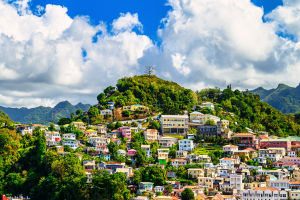The Sahara Desert is the largest hot desert in the world, spanning across more than 3.6 million square miles in North Africa.
For hundreds of years, the immense expansiveness and harsh conditions of the Sahara have captured the imagination and curiosity of explorers and scientists alike.
In this article, we are going to try to reach into the world of the Sahara Desert: its geography and climate, its history, and the incredible adaptations of its inhabitants and wildlife.
Geography and Climate
The Sahara Desert is filled with vast, sandy plains, high dunes, and plateaus of stones. The landscape continuously alters its form due to the high, erosive capability of wind and shifting sand dunes. Climate conditions are extreme in nature; daytime temperatures are very hot, while nights are freezing cold. Annual rainfall is practically negligible, with very frequent sandstorms and dust devils within the desert area.
History and Culture
The Sahara Desert is a land steeped in deep and convoluted history, from the times of the ancient Egyptians, Nubians, and Berbers to those who learned to survive under unforgiving conditions. Indeed, its trade routes connected the whole African continent, Europe, and Asia. Today, modern nomadic people of the Sahara Desert are formed of different groups like Tuareg and Bedouin. Both have uniquely established their cultures and traditions and adapted to this desert environment.
Wildlife and Adaptation
Despite the hostility of the Sahara Desert conditions, numerous types of wildlife are found in this area. Such animals include camels, gazelles, fennec foxes, and sand cats. Most of these animals possess typical adaptations enabling them to live in the desert; for instance, they can conserve water well, are active at night, and have special body structures that limit water loss.
Human Impact and Conservation
Human activities have most affected the Sahara Desert. Among the major problems that occur within this environment are desertification, deforestation, and overgrazing. These activities resulted in the loss of biodiversity and degradation within this desert ecosystem. Preservation of this fragile environment of the Sahara Desert and ensuring sustainable development has many ongoing conservation efforts.
The Sahara Desert: A Land of Contrasts
The Sahara Desert is full of huge contrasts: immense beauty, harsh realities, enormous landscapes, and resilient inhabitants. From the towering dunes of Erg Chebbi to the ancient rock art of Tassili n'Ajjer, the Sahara Desert has something different and unforgettable to offer.
Sahara Desert Exploration
It also offers a host of activities for the adventurous and explorer-seeking type: Sahara Desert treks on camelback through dunes, adventurous explorations into ancient oases, and the thrilling sport of sandboarding. When night falls in the desert, tourists can star gaze under some of the darkest skies anywhere on Earth. Nighttime offers the chance to stargaze beneath some of the darkest skies on Earth.
Interacting with Lykkers: A Community of Desert Enthusiasts
Being a desert enthusiast, this is an opportunity to interact with the members of the Lykkers community. These enthusiastic people just love the vast and amazing Sahara Desert. together the discussion of the history, culture, and wildlife of the desert through web-based discussions and experiences that were shared. The Lykkers community is so inspiring and knowledgeable tell us how you found the history of the largest desert in the world would you be interested in visiting it someday?
Conclusion
It is a vast and ancient wilderness which still captivates and challenges explorers. The extreme condition acts as the mold that has set generations after generations in life. Its unique biodiversity remains a testament to how life can be strong in most hostile environments. As we start to study the Sahara Desert, we continue to be fascinated by the beauty and fragility of our planet.


